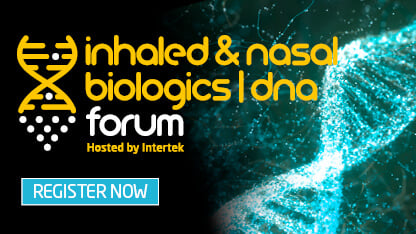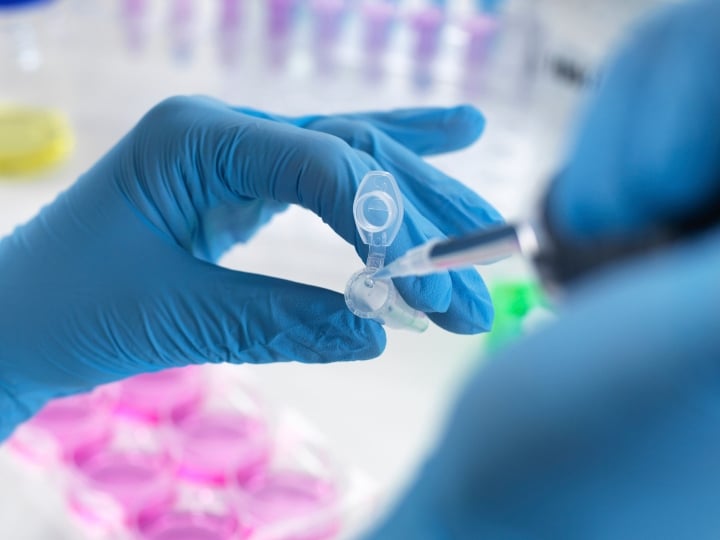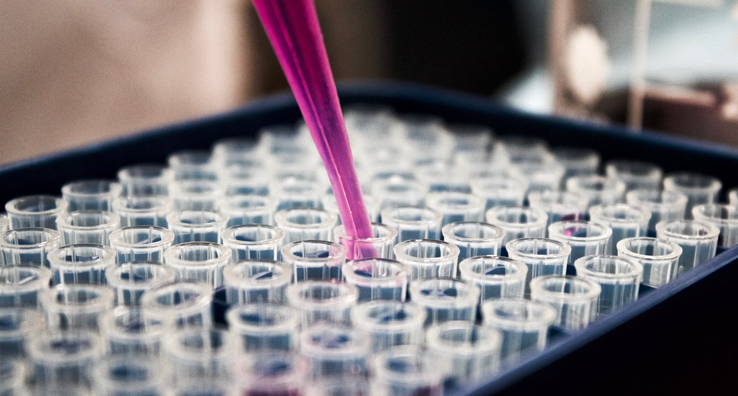Protein characterization and protein analysis services in line with ICH Q6B guidance, including structure and protein sequence analysis, physicochemical properties, biological activity, immunochemical properties and purity, and impurities determination
Protein characterization and protein analysis can present complex challenges for drug development, including navigating ICH Q6B guidance. Bioprocessing and production of recombinant proteins using mammalian cells, bacteria, yeast or transgenic plants host systems typically result in complex, structurally heterogeneous species. Characterizing proteins requires a wide range of protein analysis methods to understand a protein’s identity, purity and potency.
Protein characterization services, supporting development and regulatory submission
Throughout the development process of biologics, expert techniques for protein analysis are crucial. They are required from an early-stage to establish a well-characterized (specified) molecule and a good understanding of the protein’s structure, protein sequence analysis, biological activity, immunochemical and physicochemical properties, purity / impurities as described in the ICH Q6B Guidance, Specifications: Test Procedures and Acceptance Criteria for Biotechnological / Biological Products. Protein characterization methods are also needed to establish the impact of process changes on these factors, the stability of the protein and support release testing. To support regulatory submission, from IMPD / IND to achieve NDA / BLA / MAA, the product should be compared with an appropriate reference standard, if available, and appropriately characterized in-house reference materials established.
Our scientists have supported global clients in their protein drug development programs for nearly 30 years. Our experience across all categories of glycoproteins, biosimilars, monoclonal antibodies, PEGylated proteins, antibody drug conjugates, bispecifics, vaccines, multi-specifics, ADCs, fusion proteins and more, mean we can develop molecule-specific, strategic protein analysis techniques, designed to optimise the data required to determine or confirm identity, explore patterns of heterogeneity and demonstrate consistency in quality of the drug substance or drug product and generate appropriate data required for your regulatory submissions.
Our protein analysis services (GLP / GMP) in line with ICH Q6B guidance
With strengths in protein quantification, protein structure analysis, including higher order structure, physiochemical property determination, biological and functional assays, product- and process-related impurity testing, we can help you to achieve a "well-characterized" protein drug substance or drug product. We apply our expertise to support your product development, in-process testing, identity confirmation, comparability, stability testing, compendial assays, and batch release testing.
To support your submission, Intertek Pharmaceutical Services can provide data to Good Laboratory Practice (GLP) or Good Manufacturing Practice (GMP), as appropriate, with a comparison against the most suitable reference standard e.g. ICH Q6B guidance. Bringing quality and safety to life, we apply our Total Quality Assurance expertise to help you to meet and exceed quality, safety, and regulatory standards for your biologic development programs.
Methods for protein analysis and techniques
Our protein analysis scientists provide techniques and characterization services to ensure the quality and consistency of your product, typically using multiple strategies and orthogonal approaches for protein analysis and characterization. With in-house strengths and services in protein analysis by mass spectrometry, we establish identification using Orbitrap, QToF and the ability to provide high-resolution, accurate-mass (HRAM) data. We also use Edman degradation to perform amino acid sequencing.
Our scientists provide protein structural characterisation for the confirmation of identity and drive a detailed understanding of your molecule’s structure from primary sequence through to higher order structure.
Amino-acid Composition:
Amino-acid composition can be determined with our dedicated amino-acid analyser (AAA) for highly accurate protein content (quantity) measurement. This enables determination of the quantity of the drug substance and drug product according to ICH Q6B. AAA is performed according to Pharm Eu and can also be used to determine the extinction coefficient (in combination with UV absorption) and also quantification of free amino acids in samples.
Protein Sequencing:
Our experts perform sequencing studies using a broad range of enzymatic digestion with high resolution accurate-mass spectrometry (Orbitrap, QToF) coupled with U(H)PLC technology.
Terminal Amino Acid Sequences:
Confirmation of the amino- (N-terminal) and carboxy-terminal (C-terminal) amino acids is performed by MALDI-MS and high resolution mass spectrometry (Orbitrap, QToF) for product identification and to establish homogeneity, where understanding the type and extent of modifications at either termini is a fundamental aspect of product quality control.
Peptide Mapping:
Intertek conduct selective fragmentation of protein into discrete peptides by enzyme or chemical digestion followed by high resolution mass spectrometry (Orbitrap, QToF) analysis. Once the methodology is established, we take the methods through validation for application in batch release or stability studies.
Disulphide Bridging Mapping (S-S bridge):
Where cysteine residues are present in the molecule, our scientists perform a qualitative/semi-quantitative assessment of the position and extent of expected and mismatched disulphide bridges by high resolution mass spectrometry (Orbitrap, QToF) and colorimetric tests for free sulfhydryl groups.
Carbohydrate or Glycosylation Structure:
Glycosylation studies are designed product specific. However, these typically include determination of the levels of neutral and amino monosaccharides as well as sialic acids, assessment of glycoform distribution and glycan structure elucidation. Multiple technologies are applied in these determinations, including selective enzymatic cleavage and high resolution mass spectrometry (Orbitrap, QToF), MALDI-TOF mass spectrometry HPLC, HILIC, IEX or CE-LIF, to provide the level of structural information required.
Post-Translational Modification Studies (PTM):
Our post translational modification analysis experts apply a strategic approach to PTM analysis during early development phases to help you establish product acceptance criteria and as part of structural characterization studies and comparability programs, stability studies or quality control testing. Protein modification analysis services include deamidation, oxidation, Glycosylation, Phosphorylation, N- and C- terminal sequencing, acetylation, pyroglutamate formation, disulfide linkage, Free Thiols (Ellman), Truncations (cGE, mass spectrometry), C-terminal Lysine.
Position of Conjugation:
For antibody drug conjugates (ADCs), our scientists determine the position of attachment of the toxin to the linker and subsequently protein, also known as the sites of conjugation. High-resolution mass spectrometry (Orbitrap, QToF) typically achieves this after enzymatic digestion. Similar methods can also be applied to establishing the position of PEGylation and other conjugated forms.
Physicochemical Properties:
Our scientists design and deliver physicochemical property analytical programs in line with appendix 6.1.2 in the ICH Q6B guidelines Test Procedures and Acceptance Criteria for Biotechnological/Biological Products. Our programs are designed to optimise the data required to determine or confirm identity, explore patterns of heterogeneity and demonstrate consistency in the quality of the drug substance. We are adept at method development and phase-appropriate validation where required.
Molecular Weight:
We determine the exact molecular weight of proteins using high resolution mass spectrometry (Orbitrap, QToF). We can also apply a range of other techniques such as size exclusion chromatography (SEC), SDS-polyacrylamide gel electrophoresis (under reducing and/or non-reducing conditions).
Isoform Pattern:
Isoform pattern and impurity studies are conducted using chromatography and or gel / capillary electrophoresis (PAGE, SDS-PAGE, IEF, CIEF / iCIEF, HPLC).
Extinction Coefficient (or Molar Absorptivity):
Our protein scientists accurately determine the extinction coefficient using UV/visible absorbance on solutions of the product which have a known protein content. We quantify the concentration of protein in solution using amino acid compositional analysis, either by using an amino acid analyser or UPLC instrumental approaches.
Electrophoretic Patterns:
Electrophoretic patterns and data on identity, homogeneity and purity can be obtained by polyacrylamide gel electrophoresis, capillary isoelectric focusing (CIEF/ iCIEF), SDS-polyacrylamide gel electrophoresis, Western-blot or capillary electrophoresis.
Liquid Chromatographic Patterns:
Using size exclusion chromatography (SEC), reverse-phase liquid chromatography (RP-HPLC), ion exchange liquid chromatography (IEX), or UPLC approaches, we generate chromatographic patterns and data on the identity, homogeneity, and purity.
Spectroscopic Profiles:
The higher-order structure is examined using far and near-UV circular dichroism (CD), nuclear magnetic resonance (NMR), infrared (FTIR), intrinsic fluorescence studies or ultraviolet-visible (UV-vis) spectroscopy (second derivative) spectroscopy. Our biophysical characterisation suite of technologies also includes protein aggregation studies through dynamic light scattering, SEC with multi-angle laser light scattering (MALS) and sedimentation velocity analytical ultracentrifugation (SV-AUC).
Methods of Protein Quantification
We provide a range of total protein quantification methods, including European Pharmacopoeia (EP) and United States Pharmacopeia (USP) methods. Colorimetric assays such as UV absorbance at A280, Bradford or bicinchoninic acid (BCA) assays measure UV-light absorbance, and can be used to calculate protein concentration from the absorbance measurement once the extinction coefficient (molar absorptivity) has been accurately established. We also provide accurate quantitative amino acid analysis by high-performance liquid chromatography (HPLC) or ion chromatography (IC).
Purity, Impurities and Contaminants
Our protein analysis scientists determine process impurities such as those related to cell substrates (e.g., host cell proteins, host cell DNA), cell culture (e.g., inducers, antibiotics, or media components), or chromatographic media used in purification, solvents and buffer components. To address product related impurity analysis our team utilise a wide range of technology (chromatographic, electrophoretic, mass spectrometry, spectroscopy) to determine truncated or modified variants, degradation products or conjugated forms. We have a great deal of experience in determining the presence of aggregates and degradation products.
Potency and Biological Activity
We have extensive experience in method development, method transfer, and method validation of tailored bioassays according to GMP standards, and conducting routine potency assays using cell migration, ligand binding, ELISA, cell signalling, cell proliferation and inhibition of proliferation, binding assays or competitive assays approaches.



